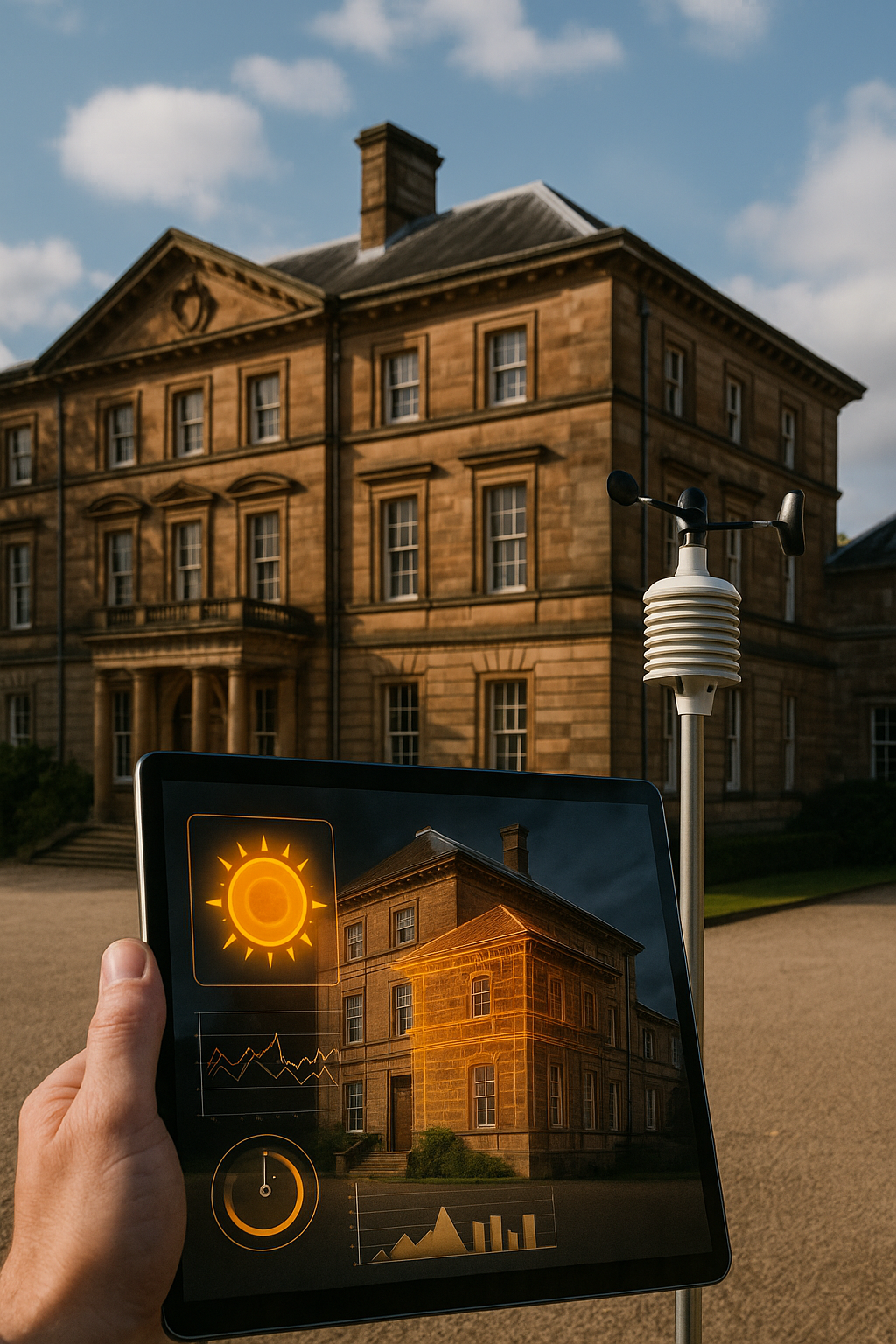AI can strengthen energy efficiency and resilience in cultural heritage sites
The study stresses that energy resilience is not just about efficiency but about the capacity of buildings to withstand shocks and continue functioning. The researchers identify four overarching resilience components, climate disaster resilience, energy resilience, sociocultural resilience, and economic resilience, with energy resilience as the focal point of their proposed framework.

Historic buildings, long treasured for their cultural and architectural significance, are increasingly under pressure from rising temperatures, humidity, and other impacts of climate change. Addressing this challenge, researchers have developed a novel artificial intelligence-supported framework designed to enhance the energy resilience of heritage buildings without compromising their historical integrity.
The study, titled An AI-Supported Framework for Enhancing Energy Resilience of Historical Buildings Under Future Climate Change and published in Architecture (2025, Vol. 5, Issue 1, Article 63), proposes a structured, multi-layer system that combines climate data, building performance analysis, and predictive AI modeling to help conservationists, architects, and policymakers prepare historic structures for the uncertain environmental conditions of the future.
Why historic buildings need energy resilience
The study explores why historic buildings require a tailored approach to energy resilience. The answer lies in their dual vulnerability: they face greater exposure to climate-driven risks such as overheating, moisture damage, and extreme weather while also being restricted by conservation rules that limit the range of possible interventions.
Historic building stock represents a substantial share of energy use globally, yet most heritage sites cannot simply adopt standard retrofit measures without damaging their fabric or cultural value. This creates a significant gap between climate resilience needs and available technical solutions. The authors argue that without predictive frameworks, heritage buildings will be left unprepared for future climatic conditions, undermining both their preservation and their contribution to sustainability goals.
The study stresses that energy resilience is not just about efficiency but about the capacity of buildings to withstand shocks and continue functioning. The researchers identify four overarching resilience components, climate disaster resilience, energy resilience, sociocultural resilience, and economic resilience, with energy resilience as the focal point of their proposed framework.
How AI transforms climate adaptation strategies
The study also investigates how artificial intelligence can support climate adaptation strategies for heritage buildings. The researchers outline a four-phase process: systematic literature review, content analysis of current practices, exploration of AI applications, and the creation of a conceptual framework.
The resulting model is structured into four operational layers. The first is data collection, which draws on sensors, thermal imaging, material tests, and downscaled climate projections using global datasets such as CMIP6 and CORDEX. The second is performance analysis, where calibrated building simulations diagnose vulnerabilities such as overheating, moisture penetration, and structural deterioration. The third layer is improving and predictive modeling, where AI techniques like artificial neural networks, random forests, and support vector machines are trained on hybrid datasets to forecast resilience outcomes under different climate scenarios. Finally, the decision support layer uses these predictive insights to guide conservation-compatible interventions, from breathable insulation and airtightness upgrades to advanced HVAC systems and renewables.
By embedding AI into each stage, the framework ensures that interventions are evidence-based, scenario-tested, and dynamically adaptable. This predictive capacity allows conservationists to anticipate how buildings will perform under future climate stress rather than relying solely on historical data. It also facilitates optimization between sometimes conflicting goals, preserving heritage, improving energy performance, and reducing carbon emissions.
What the framework means for practice and policy
Thirdly, the researchers shed light on what implications this AI-supported framework has for both practice and policy. For practitioners, the model provides a roadmap for prioritizing interventions. The study advises starting with minimal, fabric-compatible measures such as vapor-permeable insulation and selective glazing before moving to more intrusive mechanical solutions. It also highlights the importance of life-cycle carbon analysis, warning against strategies that lower operational energy use but increase embodied carbon in materials and retrofits.
For policymakers, the findings underscore the need for standardized resilience assessment tools. Current approaches are fragmented, with most studies focusing narrowly on thermal performance. Few incorporate comprehensive metrics that span envelope resilience, thermal comfort, and whole-life carbon. The authors call for consistent frameworks that would allow benchmarking across regions and building types, making policy interventions more transparent and effective.
The paper also highlights the potential for the framework to act as an early warning system. By combining real-time sensor data with predictive AI, the system can alert managers to risks such as moisture accumulation or overheating before they escalate into damage. This has implications for both long-term conservation planning and day-to-day facility management.
In terms of application, the researchers provide an illustrative case for a masonry heritage building in a humid climate. By feeding sensor data and climate projections into their framework, the system recommends specific interventions like dynamic shading and breathable insulation, balancing heritage protection with resilience upgrades. This case demonstrates how the framework can be adapted to different climates and building types.
- FIRST PUBLISHED IN:
- Devdiscourse










